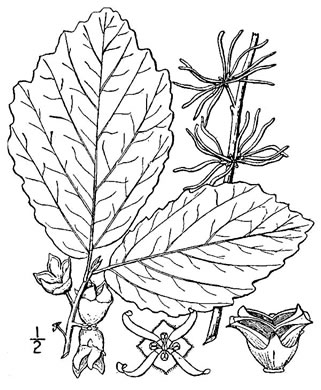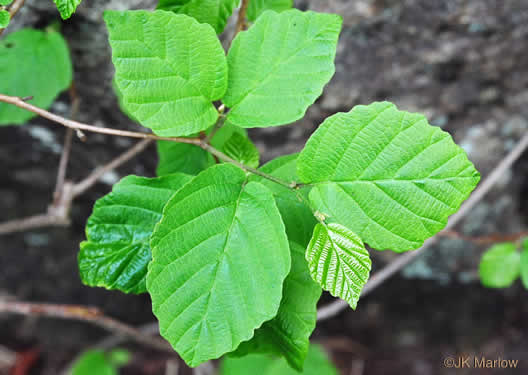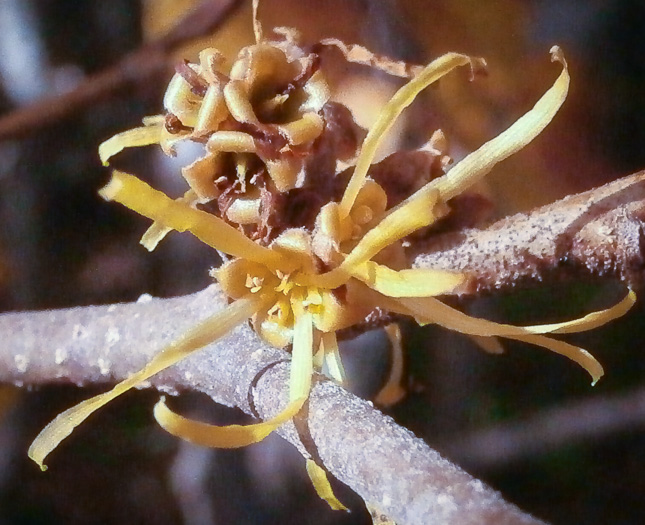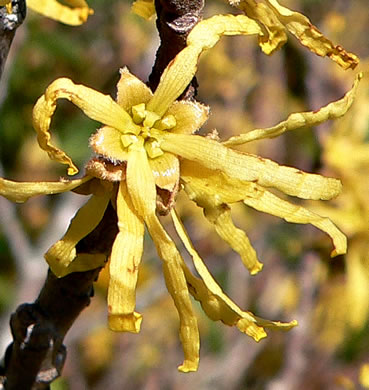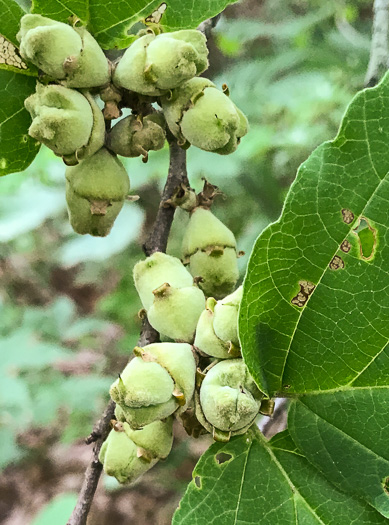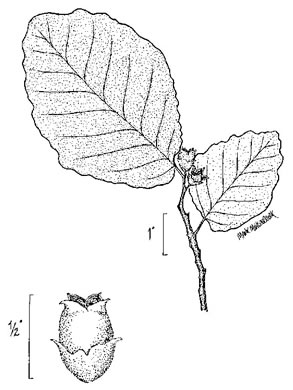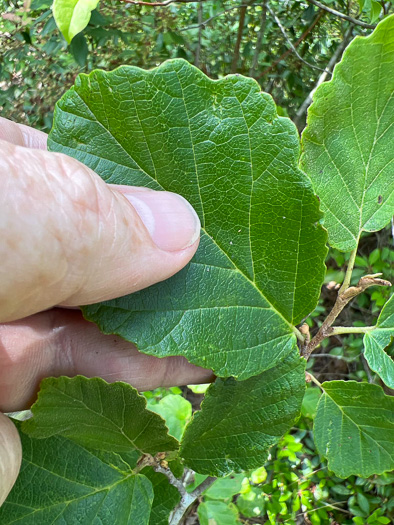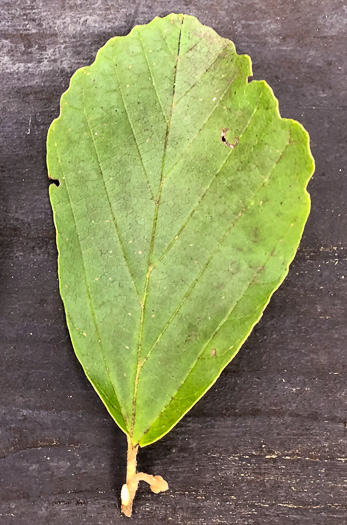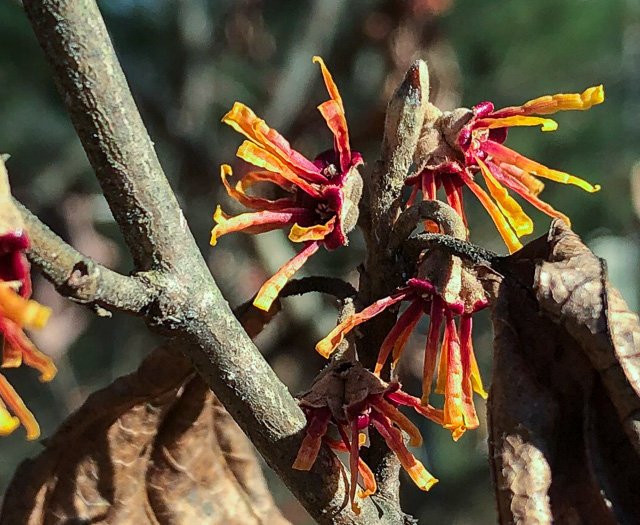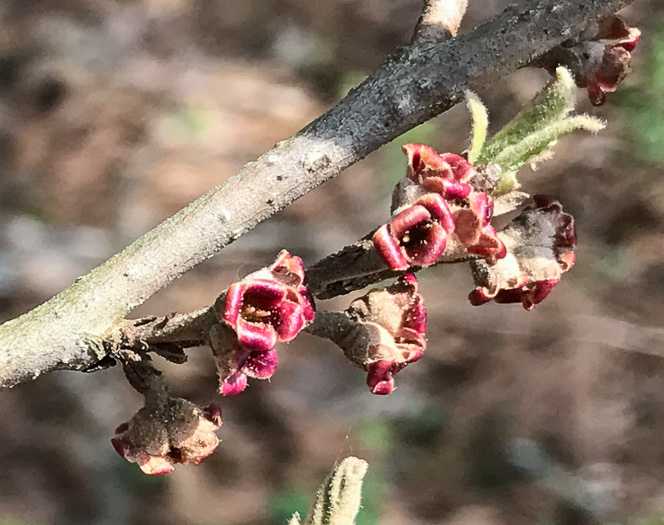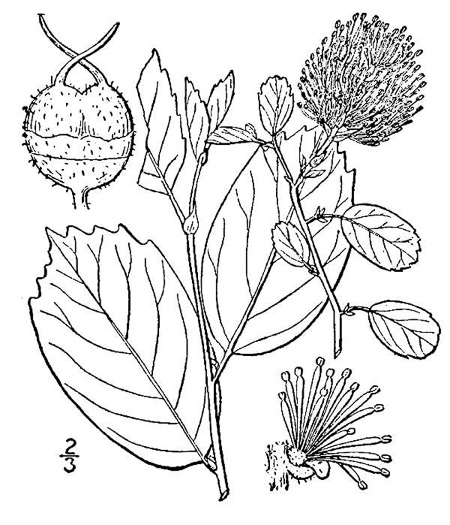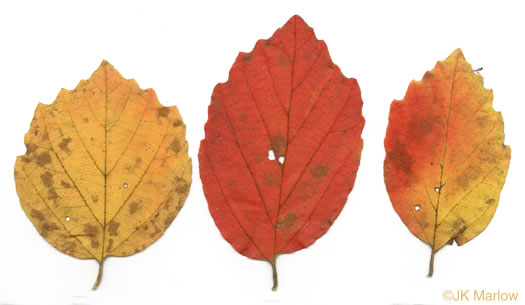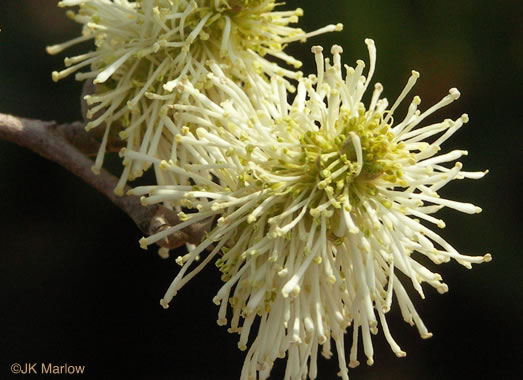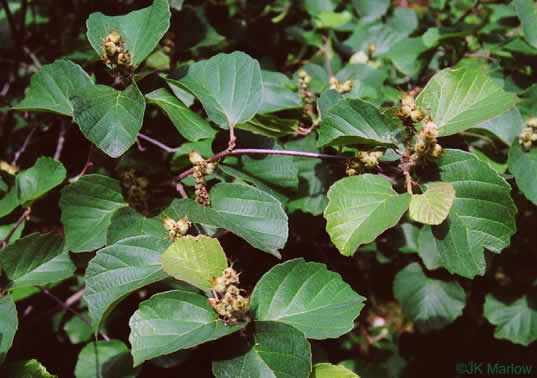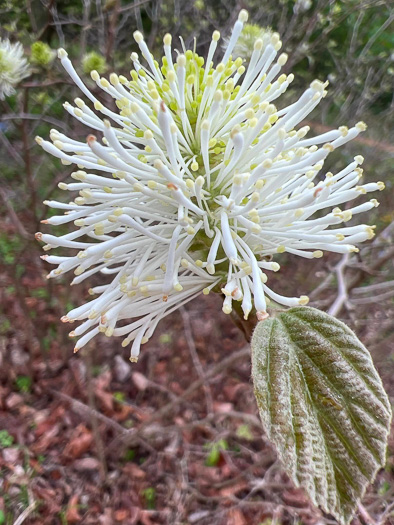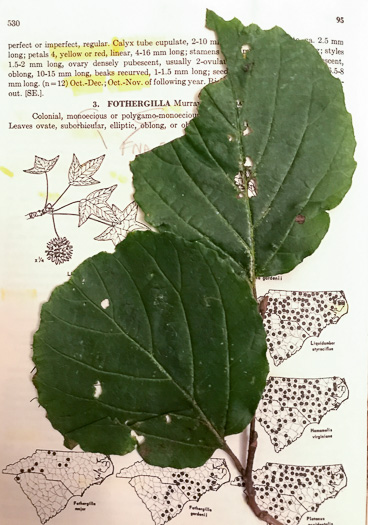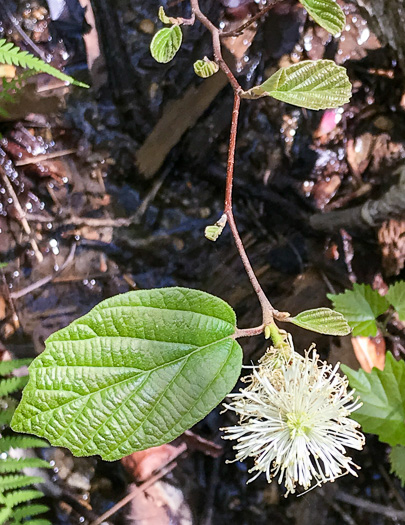Hovering over an image will enlarge it and point out features (works better on desktop than on mobile).
![]() A camera indicates there are pictures.
A camera indicates there are pictures.
![]() A speaker indicates that a botanical name is pronounced.
A speaker indicates that a botanical name is pronounced.
![]() A plus sign after a Latin name indicates that the species is further divided into varieties or subspecies.
A plus sign after a Latin name indicates that the species is further divided into varieties or subspecies.
Most habitat and range descriptions were obtained from Weakley's Flora.
Your search found 6 taxa in the family Hamamelidaceae, Witch Hazel family, as understood by Weakley's Flora.

![]()
![]() Common Name:
Northern Witch-hazel
Common Name:
Northern Witch-hazel
Weakley's Flora: (4/14/23) Hamamelis virginiana var. virginiana FAMILY: Hamamelidaceae
INCLUDED WITHIN PLANTS National Database: Hamamelis virginiana FAMILY: Hamamelidaceae
INCLUDED WITHIN Vascular Flora of the Carolinas (Radford, Ahles, & Bell, 1968): Hamamelis virginiana 095-02-001 FAMILY: Hamamelidaceae
Habitat: Moist to dryish forests
Common
Native to the Carolinas & Georgia

![]() Common Name:
Small-leaved Witch-hazel
Common Name:
Small-leaved Witch-hazel
Weakley's Flora: (4/14/23) Hamamelis virginiana var. henryae FAMILY: Hamamelidaceae
INCLUDED WITHIN PLANTS National Database: Hamamelis virginiana FAMILY: Hamamelidaceae
INCLUDED WITHIN Vascular Flora of the Carolinas (Radford, Ahles, & Bell, 1968): Hamamelis virginiana 095-02-001? FAMILY: Hamamelidaceae
Habitat: Longleaf pine sandhill margins, xeric hammocks, streamheads, xeric river bluffs in the Fall-line Sandhills
Uncommon in GA, rare in SC
Native to South Carolina & Georgia

![]()
![]() Common Name:
Ozark Witch-hazel, Vernal Witch-hazel, Springtime Witch-hazel
Common Name:
Ozark Witch-hazel, Vernal Witch-hazel, Springtime Witch-hazel
Weakley's Flora: (4/24/22) Hamamelis vernalis FAMILY: Hamamelidaceae
SYNONYMOUS WITH PLANTS National Database: Hamamelis vernalis FAMILY: Hamamelidaceae
Habitat: Stream banks, open riparian forests, gravel bars, river scour; also lower slopes adjacent to these habitats
Native: south central US

![]()
![]() Common Name:
Coastal Witch-alder, Pocosin Witch-alder, Dwarf Witch-alder, Fothergilla
Common Name:
Coastal Witch-alder, Pocosin Witch-alder, Dwarf Witch-alder, Fothergilla
Weakley's Flora: (4/14/23) Fothergilla gardenii FAMILY: Hamamelidaceae
INCLUDED WITHIN PLANTS National Database: Fothergilla gardenii FAMILY: Hamamelidaceae
INCLUDED WITHIN Vascular Flora of the Carolinas (Radford, Ahles, & Bell, 1968): Fothergilla gardenii 095-03-001 FAMILY: Hamamelidaceae
Habitat: Wet savannas, pocosins, and margins of pocosins, and pitcherplant bogs
Uncommon (rare in GA)
Native to the Carolinas & Georgia

Common Name: Kearney's Witch-alder
Weakley's Flora: (4/14/23) Fothergilla parvifolia FAMILY: Hamamelidaceae
INCLUDED WITHIN PLANTS National Database: Fothergilla gardenii FAMILY: Hamamelidaceae
INCLUDED WITHIN Vascular Flora of the Carolinas (Radford, Ahles, & Bell, 1968): Fothergilla gardenii 095-03-001? FAMILY: Hamamelidaceae
Habitat: Wet savannas, pocosins, and margins of pocosins, and pitcherplant bogs
Rare
Native to South Carolina & Georgia

![]()
![]() Common Name:
Large Witch-alder, Mountain Witch-alder, Fothergilla
Common Name:
Large Witch-alder, Mountain Witch-alder, Fothergilla
Weakley's Flora: (4/14/23) Fothergilla major FAMILY: Hamamelidaceae
SYNONYMOUS WITH PLANTS National Database: Fothergilla major FAMILY: Hamamelidaceae
SYNONYMOUS WITH Vascular Flora of the Carolinas (Radford, Ahles, & Bell, 1968): Fothergilla major 095-03-002 FAMILY: Hamamelidaceae
Habitat: Dry ridgetop forests of middle elevation ridges in the mountains, especially along the Blue Ridge Escarpment, summits and upper slopes of Piedmont monadnocks, north-facing bluffs and along small streams in the lower Piedmont
Uncommon in NC Mountains (rare elsewhere in GA-NC-SC)
Native to the Carolinas & Georgia
Your search found 6 taxa. You are on page PAGE 1 out of 1 pages.

